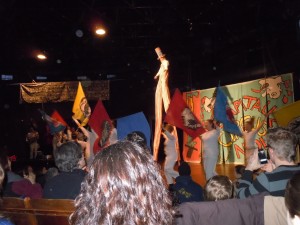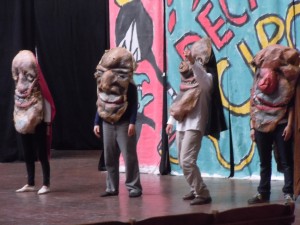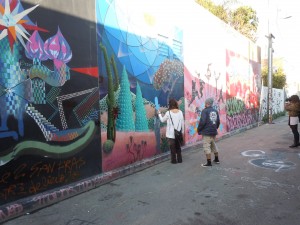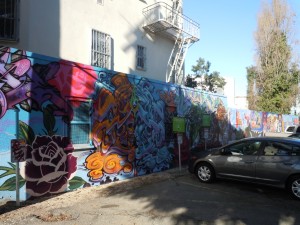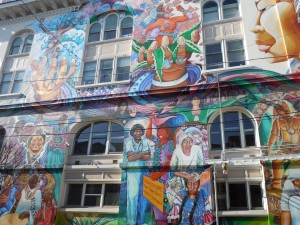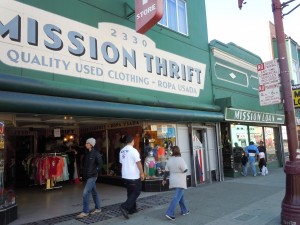“Fabulous” vs. “Dogma”: Blasphemy is in the Eye of the Beholder
Recently, a local high school was targeted by an out-of-state hate mail campaign because it chose to produce “The Most Fabulous Story Ever Told,” a gay and lesbian retelling of the Bible by Paul Rudnick. Protestors from various church groups promised to picket the performances. The story even made the Huffington Post.
It happened that the school producing the play was Pioneer Valley Performing Arts Charter Public High School, where both my children attended some years ago—a school known for its fabulous (reference intended) theater and dance departments. We’ve continued to attend many of the school’s performances even though my younger child is already a sophomore in college.
So of course, both to defend freedom of speech in the Pioneer Valley and to enjoy a night of theater we knew would be terrific, we attended. And we were gratified that in addition to the antigay protestors, a goodly multitude of pro-performance church groups were on hand to lend support.
The interesting thing is…if you accept the basic premise that gay and lesbian couples exist (and, in this play, were present at creation and right through modern times)—there’s almost nothing blasphemous in the play, which centers on Adam, through the ages, trying to find meaning in life. His questioning is very much rooted in the Old Testament tradition of prophets arguing with God. The whole alternate world is set in motion by a Stage Director (female, in this performance), which makes it clear from the get-go that this is an imaginary theatrical universe within the universe we all now, as opposed to any real redefinition of Biblical history. I found exactly one scene that fundamentalists might object to: 30 seconds out of a two-hour play that imply the Christ child was born of the play’s lesbian couple—and even this keeps the virgin birth intact.
Of course, the vast majority of those who protest this play wherever it is performed have never seen or read it. Fundamentalism, of any religion, leaves no window for dissenters and questioners.
By contrast, I just saw a 1999 movie called “Dogma,” a low-budget flick with a superstar cast (including very young Matt Damon and Ben Affleck as a pair of very foul-mouthed sin-avenging angels on a killing spree, George Carlin as a shady, street-tough Catholic Cardinal in New Jersey, Chris Rock as the delightful unknown 13th Apostle, and Salma Hayek as as a celestial being-turned-stripper). Early in the movie, we see Damon in an airport lounge, casting deep doubts about God’s existence into the mind of a confused Catholic nun. After she leaves, Affleck points out the irony that Damon’s character has known God directly.
An angel who kills with an assault weapon is only one of the many blasphemies—not all of them violent. The reimaging of several different pieces of the Jesus story as well as the portrayal of God will no doubt raise a few eyebrows among the faithful. Hundreds of people die in this funny but very gory film.
Now this is a movie that many Christians and religious Jews would find blasphemous all the way through—if they can stop laughing long enough to reflect on it. And yet, I didn’t remember any protests around it!
But Google has a better memory than I do; there were protests, actually. In fact, Disney’s Michael Eisner cut the film loose from his empire, under pressure from the Catholic League. Not only that, but the film’s director, Kevin Smith, infiltrated one of the protests—what a brilliant publicity move! He wrote and spoke (quite humorously) about his experience on this page, which also includes a TV news report of the protest, where he got recognized and interviewed.
I can understand that a film about a couple of angels cursing and shooting their way through modern America would upset people. But what does it say about our culture that people also get upset about sincere and committed expression of same-sex love?

